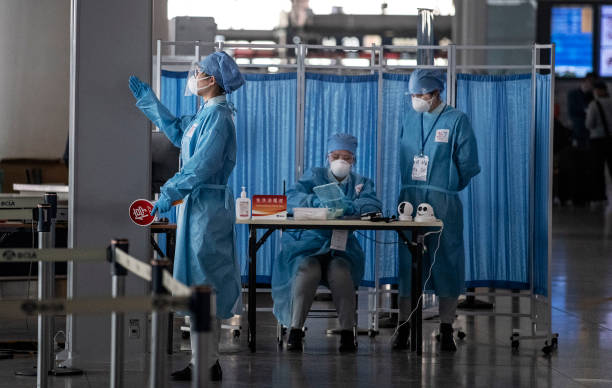
Pregnant and frightened, Natasha Valle went to a Tennova Medical care emergency clinic in Clarksville, Tenn., in January 2021 in light of the fact that she was dying. She had close to zero insight into unnatural birth cycle, yet entirely this seemed like one.(Midlevel Practitioners in ER)
In the trauma center, she was analyzed then sent home, she said. She returned while her squeezing became horrifying. Then home once more. Valle said it at last went on three outings to the trama center on three back to back days, creating three separate bills, before she saw a specialist who took a gander at her bloodwork and affirmed her feelings of dread.
“At the time I wasn’t thinking, ‘Gracious, I really want to see a specialist,’ ” Valle said. “However, when you consider it, it’s like, ‘Well — darn — for what reason didn’t I see a specialist?’ ” It’s hazy assuming the recurrent emergency room visits were because of postpones in seeing a doctor, or on the other hand if that impacted her consideration, yet the experience concerned her. She’s actually covering the bills.
The clinic declined to talk about Valle’s consideration, refering to patient security. In any case, 17 months before her three-day difficulty, Tennova had rethought its trauma centers to American Doctor Accomplices, a clinical staffing organization claimed by confidential value financial backers. Application utilizes less specialists in its trama centers as one of its expense saving drives to increment profit, as per a private organization record got by KHN and NPR.
Cost-Cutting Measures in Emergency Rooms: Shift towards Mid-Level Professionals for Maximum Staffing Efficiency
This staffing technique has pervaded medical clinics, and especially trauma centers, that look to decrease their top cost: doctor work. While diagnosing and treating patients was once specialists’ space, they are progressively being supplanted by nurture experts and doctor collaborators, aggregately known as “midlevel professionals,” who can perform large numbers of similar obligations and produce a significant part of a similar income for not exactly a portion of the compensation.
“Application has various expense saving drives in progress as a feature of the Organization’s nonstop spotlight on cost improvement,” the record says, including a “shift of staffing” among M.D.s and mid-level specialists.
In an explanation to KHN, American Doctor Accomplices said this methodology is a method for guaranteeing all emergency rooms remain completely staffed, considering it a “mixed model” that permits specialists, nurture professionals and doctor collaborators “to give care to their fullest potential.”
Pundits of this technique say the mission to set aside cash brings about therapy distributed by somebody with undeniably less preparation than a doctor, leaving patients helpless against misdiagnoses, higher hospital expenses, and deficient consideration. Proof reinforces fears that dropping specialists from trauma centers may not be good for patients.
A functioning paper, distributed in October by the Public Department of Financial Exploration, examined generally 1.1 million visits to 44 trama centers all through the Veterans Wellbeing Organization, where nurture specialists can treat patients without oversight from specialists.
Impact of Nurse Specialists on Emergency Room Care: A Study Analysis(Midlevel Practitioners in ER)
The role of nurse practitioners in the emergency room has come under scrutiny in a recent study that found their treatment resulted in an average 7% increase in the cost of care and an 11% increase in length of stay. The study discovered that patients with severe diagnoses had a wider gap in their treatment but this gap could be reduced with the help of more experienced nurse practitioners. The study also revealed that patients treated by a nurse practitioner in the emergency room were more likely to be readmitted for a preventable reason within 30 days, with a 20% increase, even though the overall risk of readmission remained low
Yiqun Chen, assistant professor of economics at the University of Illinois-Chicago and co-author of the study, emphasized that these findings should not be seen as an indictment of nurse practitioners in the emergency room. Instead, she hopes the study will provide guidance on how to best utilize nurse practitioners in emergency care. Chen notes that the deployment of nurse practitioners in the emergency room should depend on the complexity of the case and the availability of physicians.
“It’s important to understand that the substitution of physicians with nurse practitioners is not a straightforward solution,” said Chen. “The utilization of nurse practitioners in emergency care should be strategic, taking into account the patient’s diagnosis and the availability of physicians.”
Previous Studies Offer Mixed Results on the Utilization of Midlevel Practitioners in Health Care
Previous studies support the findings of Yiqun Chen’s research, including one from the Harvey L. Neiman Health Policy Institute that discovered a 5.3% increase in imaging associated with non-physician practitioners in emergency rooms, leading to potential unnecessary costs for patients. Another study at the Hattiesburg Clinic in Mississippi found that the utilization of midlevel practitioners in primary care led to increased out-of-pocket costs for patients and reduced performance in 9 out of 10 quality-of-care metrics, including cancer screenings and vaccination rates.
However, definitive evidence that replacing ER doctors with nonphysicians has a negative impact on patients is still lacking, according to Dr. Cameron Gettel, an assistant professor of emergency medicine at Yale. Gettel points out that the rise of private equity investment and the use of midlevel practitioners in the ER have gone hand in hand, and without significant research that proves otherwise, this trend is likely to continue.
“Worse patient outcomes haven’t really been shown across the board,” he said. “And I think until that is shown, then they will continue to play an increasing role.”